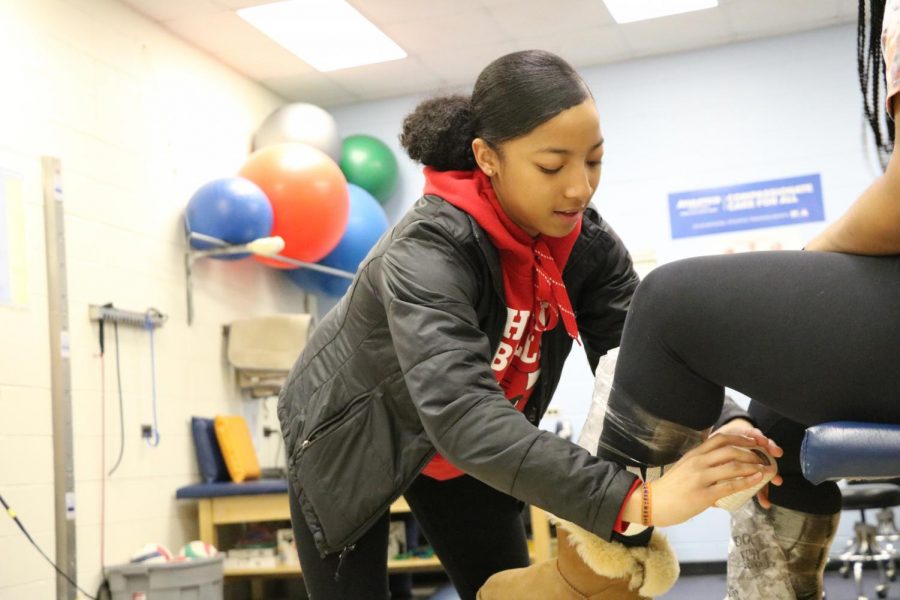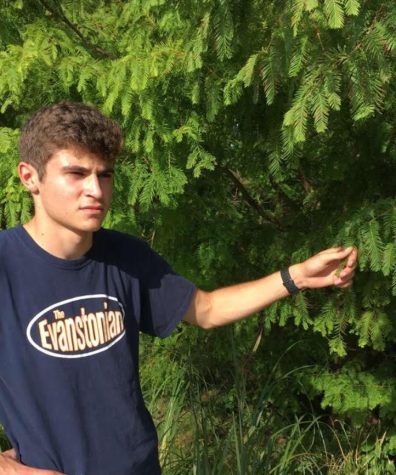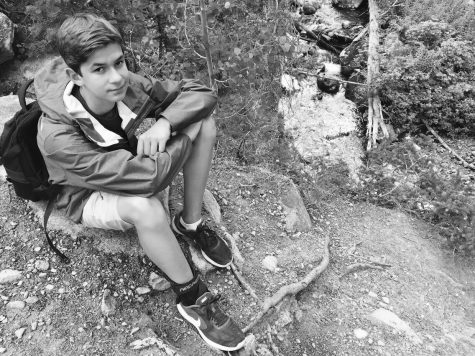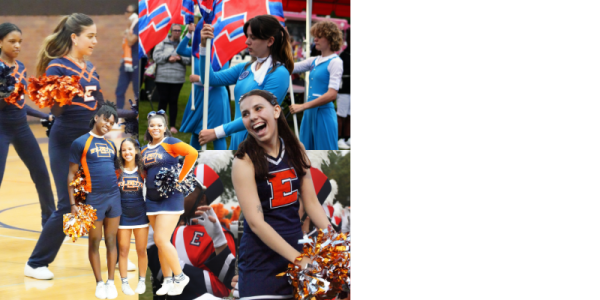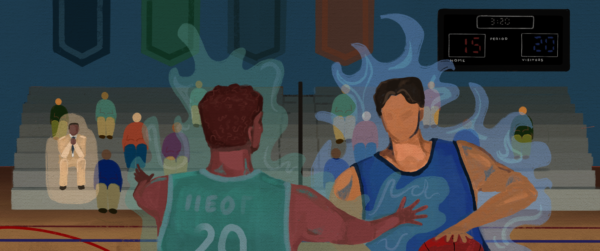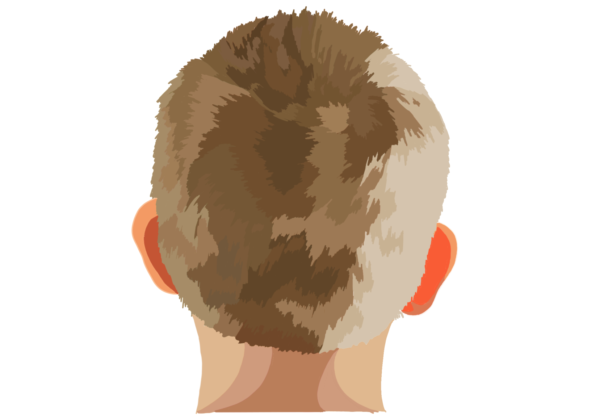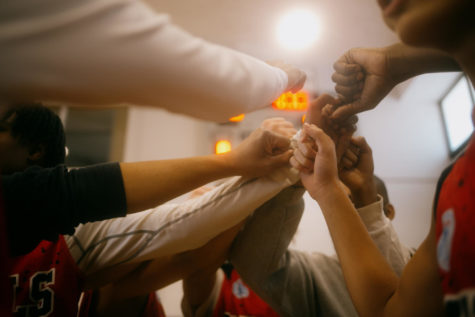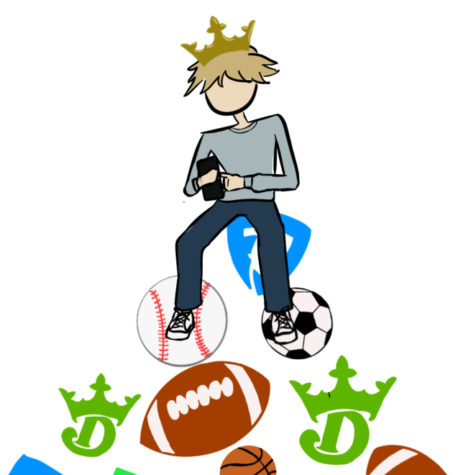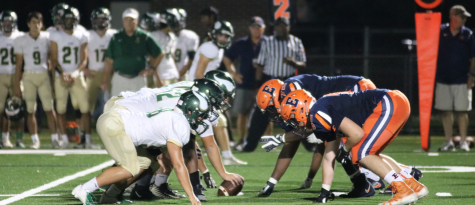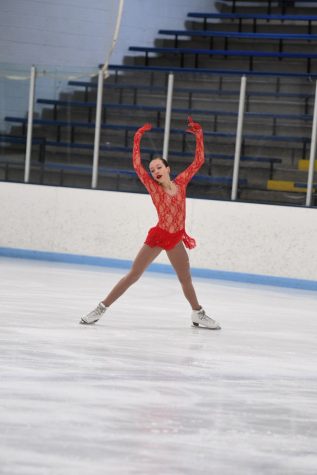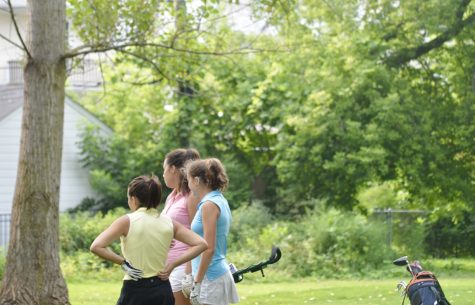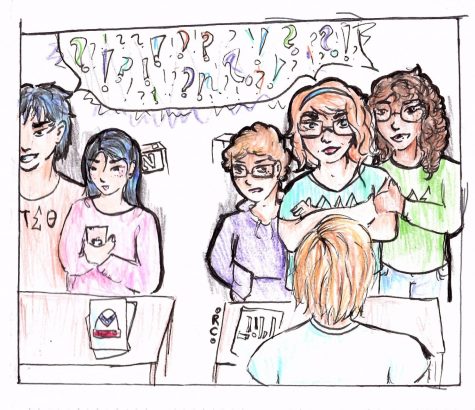Iced Out: The unsung heroes of ETHS athletics
Senior Mina June ices down an athlete’s legs after a practice.
February 15, 2019
As junior runner Jack Rutstein entered the final lap of his one-mile race, he began to break form as he made his final push to the finish.
Just as the end was in sight, Rutstein felt his hip “pop,” and a once minor soreness became an agonizing injury. Immediately after the race, Rutstein hobbled to the athletic training office.
Once he got there, co-head athletic trainer Khaliah Elliston quickly evaluated the injury and began treatment to reduce pain and inflammation.
“When things go wrong, when they go really wrong, we’re the ones that [the athletes] look to,” co-head athletic trainer Rob Duwar said. “We’re the ones that take care of them.”
Duwar, Elliston and 10-20 student aids treat roughly 50 injuries like Rutstein’s every day. With over 1,300 athletes at ETHS each year, the athletic trainers are always busy, keeping an open door for all student athletes six days a week.
Athletic trainers do not exclusively treat daily injuries though; they also offer rehab programs for chronic injuries. These rehab programs are not only effective and accessible, but free of charge.
By providing in-school consultations, students, no matter their financial situation, are able to get a professional opinion and access to proper treatment to get them back on the playing field. Typically these same rehabilitation services would cost hundreds to thousands of dollars at the emergency room or other treatment centers.
“It’s a fantastic impact. [Athletic trainers] treat the injuries specifically. Whether it needs taping, rest, ice or heat, they’ve got the correct tools and plans in place for whatever you should need,” Rutstein said. “They’re a very valuable asset, and I wish more people credited them and knew about them.”
On top of injury treatment, athletic trainers work with teams before, during and after games to prevent overuse injuries during the season.
“Probably 50% to 60% of what we do is trying to prevent more serious injuries,” Duwar said. “If we have somebody who has a history of any kind of injury whether it be spraining ankles or anything like that, while they are healthy, doing preventative things such as taping, bracing and making sure they are doing extra exercises to strengthen up their weakened areas can really make a difference.”
Elliston and Duwar are not alone in their work. The athletic training staff is comprised of 10-20 student trainers each sports season as well. Through a combination of instruction and hands-on experience, students learn the ins-and-outs of basic medical care for athletes.
“We’re responsible for wrapping wrists, fingers, thumbs, we ice people and we help people stretch,” junior student athletic trainer Denise Partee said. “We help them with different exercises if they’re hurt. We do basic stuff like that while the trainers evaluate the athletes.”
Duwar and Elliston try their best to mentor their student aids to not only become skilled medical workers, but positive role models in the community as well.
“I want [the student trainers] to go through this program to get a first hand look at what this job entails,” Duwar explained. “I also want to work with them and show them how to be professional no matter what their job may be.”
Becoming a professional takes skills rarely taught in the classroom and will resonate with students for the rest of their lives, no matter what the future holds.
“There are certain things that are professional and certain things that aren’t,” Duwar said. “It doesn’t matter if you’re working in the medical field or selling cars or working in a restaurant. There are certain things that are just considered professional and they should carry themselves like that at all times.”
The athletic training program is listed as an ETHS varsity sport, something not often realized by other students, and it’s just as much of a time commitment.
“All of our kids are here nine times out of 10 the same time the other athletes are here,” Elliston said.
Despite the time and effort trainers put in daily, they continue to gain little acknowledgement from most students, athletes or not. Of the five student aids interviewed, all agreed that students tend to take both them and the athletic training program for granted.
“We do a lot more than people expect. Teams come in everyday expecting things from us and [some] people don’t even know that there are student trainers,” sophomore Rose Kaminski said.
Without the athletic training program, student athletes recurrently would be left without access to proper treatment or immediate care. The athletic training program provides students with a free service that often is necessary in ensuring the health of ETHS athletes.
“These guys are the masterminds behind the programs,” Rutstein said. “Basketball players always coming in here, football players always coming in here, runners coming in here. I think that all these things they provide help the overall performance of the athletes.”


